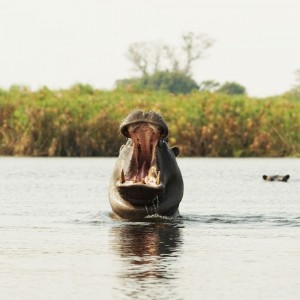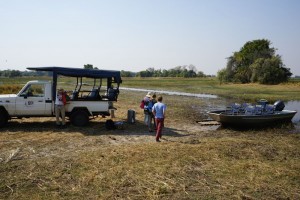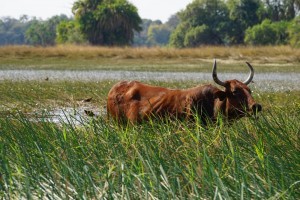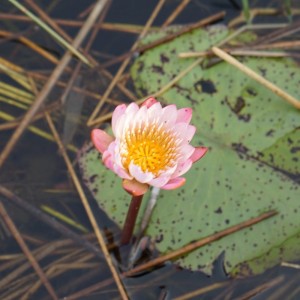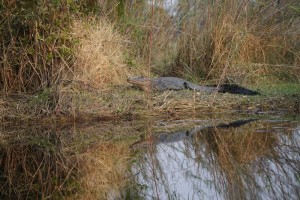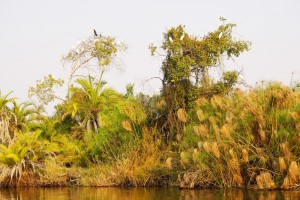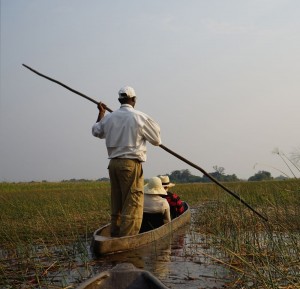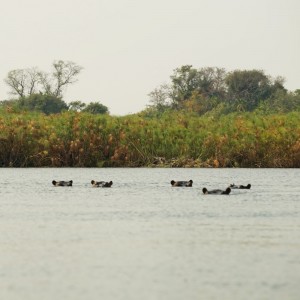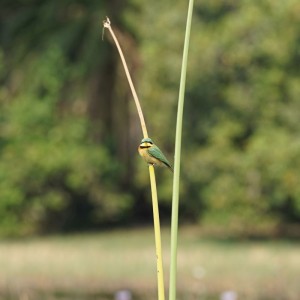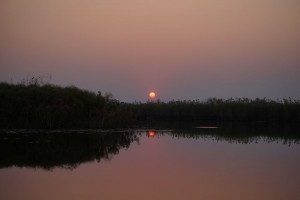We had a great experience when visiting the Nxamaseri Island Lodge, part of the Okavango Pan Handle in Botswana last year.
The Pan Handle is before the river becomes the delta – it is starting to widen, has waterways, floodplains, lagoons and islands, it has both deeper and more shallow water and is extremely beautiful.
It was fabulous to be transported along the waterways and floodplains by Mokoro, a dug out canoe. All the hard work was done by the boatman, using a “ngashi”, or long pole, to propel us through the water. The quiet and closeness to the water life all contributed to this being an exceptional experience.
We were able to go at our speed of interest – which usually meant slowly – where we could watch every kingfisher, fish eagle or flock of egrets, creep up on crocodiles sunning themselves and find pods of hippos in lagoons. The lilies, the vast reed beds and the papyrus choked waterways were all lovely.
The sound of moving through water was revitalising. We were able to visit islands, embrace both the sunset and sunrise, and enjoy a variety, breadth and depth of encounter which made my heart sing.
The boat-men had expert knowledge of the waterways – not just their layout and connection between lagoons and islands, nor their skilful use of the “ngashi” to propel us along, but of the depth of the water and the use of the “hippo pathways”.
This was my big surprise. Hippo pathways. What looked like reed beds and flowers covering all of the water, contained a series of pathways hidden within them. The boatmen knew where the hippos pathways (as I called them) were, using them made their work faster and easier. The pathways genuinely had been made by hippos, who used the routes to move from lagoon to lagoon, usually at night.
This made me think. In our work, where are the pathways to help us? Pathways that make our progress faster and easier, reduce resistance; that are below the water line and initially almost invisible to the eye?
Without pathways, we can fall into the trap of believing that work always has to be hard, difficult, demanding, slow and full of resistance. Alternatively we can understand and accept that there is a place where hippos have already paved the way for us, which each night they use themselves to keep avenues open.
There’s another, rather obvious factor too – hippos can be very dangerous. It’s worth keeping a safe distance and making sure not to annoy them. The boatmen found the pods of hippos, told us all about their habits, positioned us for great photos, yet kept us well away at the edge of the lagoon. So the very thing that can offer us a pathway can also be a danger to watch out for.
How might this story work for you? In your work is there a danger, or perhaps the risk of danger, which is also an enabler and facilitator of progress for you?
Here’s an idea: can I be your boatman? Where instead of a “ngashi” I offer my skilful use of leadership, culture and behaviour change tools and knowledge to help you with your goals?
If you would like to discuss how this idea applies to your work, your team or your organisation, get in touch. I’d love to work with your hippo pathways so you can progress more effectively, faster and with less effort.
Gill How has over twenty years experience of developing leadership teams, culture and behaviour change programmes – helping improve outcomes everyday. If you would like an exploratory conversation to see how she can help you meet your goals, contact her here.
Photo Credits: Martin How

